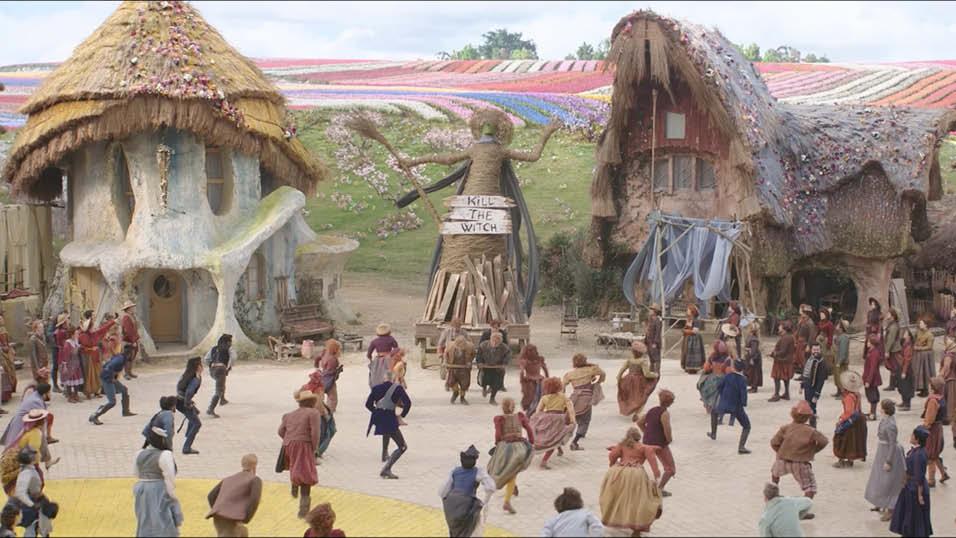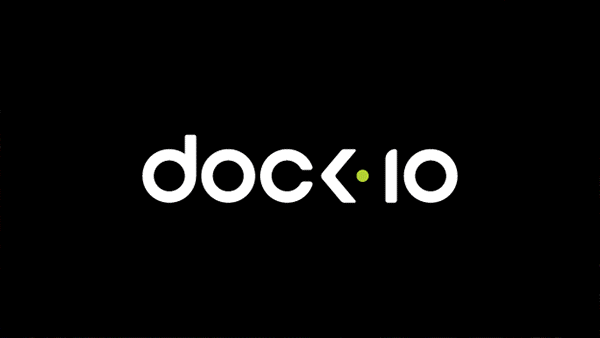A Wicked idea; why Munchkinland was populated with volumetric crowds
Simon Windsor, Co-Founder and Co-CEO of virtual production studio, Dimension
The history of filmmaking is also the history of crowd making. Early filmmakers had to use large numbers of extras: Metropolis used 37,000, Ghandi approximately 300,000. But as technology advanced, so did crowd creation with digital crowd simulations emerging in the late 1990s, used on the likes of Titanic and Star Wars: The Phantom Menace and then advancing in the early 2000s when Lord of The Rings created huge throngs of orcs.
As tools developed, filmmakers benefitted from more efficient, cost-effective – and most importantly – believable ways to create expansive scenes. The authenticity of a crowd is at the heart of digital crowd creation today, and it’s for this reason that Dimension Studio developed its volumetric digital crowds pipeline.
Several of the existing crowd creation options have drawbacks. Shooting 2D green screen plates of crowds and dropping them into the scene in post-production is one. But this doesn’t provide any flexibility with how crowds appear; it needs to be carefully planned out in order to shoot the right angle. Performers are also separate from the action, impacting the authenticity of their performance.
Another option is to create full 3D humans in post-production which provides you with the flexibility of putting them anywhere, but requires design iterations, creative approvals, sculpting, rigging and animation. All of which is expensive to scale – and isn’t the right approach if you need more than just a few people in the crowd.
Volumetric capture of background actors however, provides several advantages for crowd creation. Firstly, because volumetric is photogrammetry you capture the exact likeness and exact performance from the actors, preserving intricate details like wardrobe, hair and make-up and an actor’s authentic performance. Secondly, because the volumetric video is a free viewpoint asset, filmmakers have complete creative flexibility when composing the crowds in post with the ability to change your mind about the shot and easily change camera angle.
Scaling photo-realistic crowds is more efficient and cost effective than other traditional digital approaches. With the volumetric capture of just tens or hundreds of extras you can scale crowds to thousands of people, as Dimension did for the concert scenes in Whitney Houston: I Wanna Dance With Somebody.
Universal Pictures’ Wicked is another great example of this, where the production team wanted to extend the crowds further than the background actors they had on set. This required a solution to capture the actors while they were in full wardrobe, and before knowing exactly where and how they would be needed in post-production.
The Wicked production team and VFX vendors worked with Dimension to test a workflow to do just this. For the shoot, Polymotion Truck; our mobile volumetric capture studio was set up at Elstree Studios and over two days, our team volumetrically captured performances of 76 background actors in over 75 minutes of footage, or around 100,000 frames. The capture sessions’ data was processed by our team and handed over to Framestore who were doing the scenes’ VFX work.
We also needed to track props using the Optitrack motion capture system, which included hats that moved and shifted during performances. By tracking these relative to the performer, the hats could be updated to create a unique crowd, and helped to make sure subtle movements weren’t lost to cause hats to look disconnected from the performances in the final output.
One of the biggest benefits that a volumetric approach gave to the team on Wicked was that the actors that Dimension captured were coming straight off the set. They’d spent time interacting with the world, seeing other actors in full costume and being a part of the scene already. So the team could get really believable and authentic performances from them. Not to mention that they were already camera ready so the data included accurate and detailed captures of the film’s beautifully-crafted costumes.
Capturing actors volumetrically like this gives filmmakers much more flexibility. Free viewpoint data created by Dimension’s capture workflow can be used in any scene, at any angle in full detail. And changes to the composition of the crowd can be done at any time; moving individuals around, changing camera angles, even changing the look of the volumetric capture at any point in the process.
Filming crowds volumetrically provides benefits both for visual effects sequences like in Wicked, or for real-time virtual productions. Dimension also recreated the crowds of Ancient Rome for ICVFX LED volume environments during its work on Roland Emmerich’s Those About To Die on Amazon Prime.
Volumetric crowds will continue to gain popularity thanks to the workflow’s ability to operate more efficiently and cost-effectively, how it provides much more flexibility and generates the most natural and authentic performances from background actors.
Jon Creamer
Share this story


















